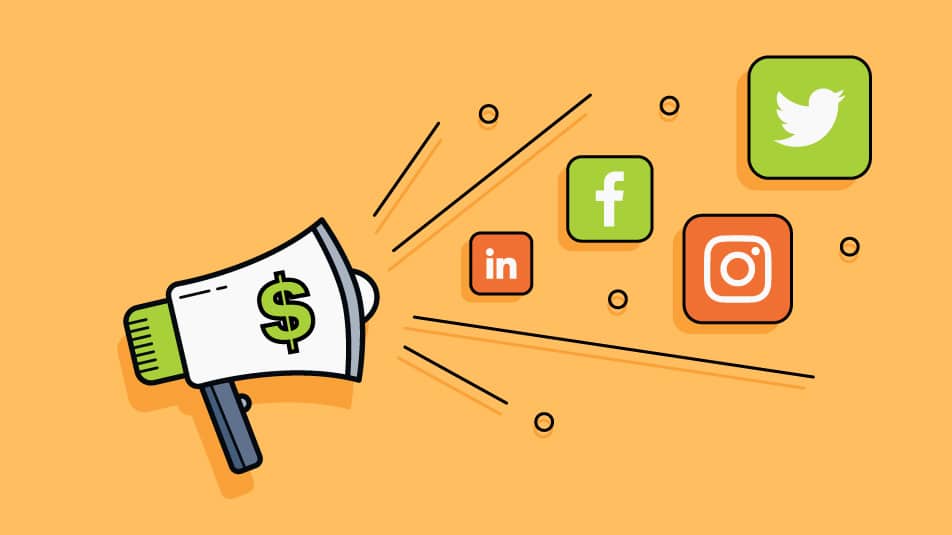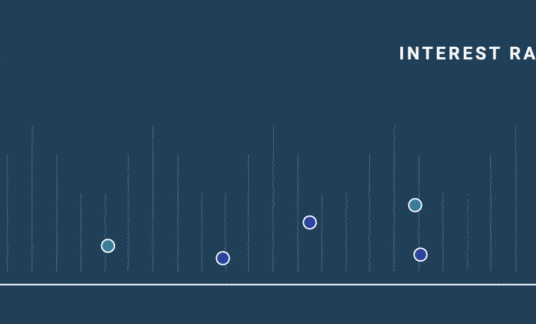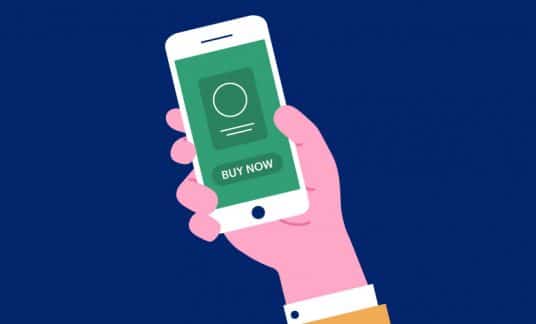When evaluating how best to promote your brand and drive sales, you’ll want to know where your advertising dollars will be best spent and whether it’s worth it to invest in paid social media.
For many businesses, it is.
Here’s what to consider when you’re deciding whether paid social media advertising is worthwhile.
What Is Paid Social Media?
First, let’s start with the basics of paid social media advertising. While the term is fairly self-explanatory, let’s crystallize the concept.
Paid social media marketing examples include pay-per-click advertising, display ads, branded content and influencer marketing. The format can be text, images or video.
The goal? Target specific audiences in the hopes of driving brand awareness and action.
Organic vs. Paid Social Media Marketing
While paid social media marketing involves a cost to advertise, organic social doesn’t. It refers to the free posts you can submit on any social media platform, similar to how you would use your personal social media account. Keep in mind, your social efforts are still considered organic even if you employ fee-based tools to automate your posts, such as Hootsuite.
Organic social media could include content you post, comments you make or replies to followers.
Why Paid Social Media Is Important
Paid ads on social media are important because they work. Not only do they help increase exposure, but the practice is growing in popularity. Indeed, buying via social media is projected to rise.
While it’s true that social media users who see an ad in their news feed may not be as quick to convert, 58% of individuals surveyed indicated that social media does influence their purchasing decisions, according to Statista. Additionally, 48% said social media made them aware of products or services they went on to purchase.
Social media ads also are among the top 5 sources of new brand discovery in 2020, according to Hootsuite, with percentage breakdowns of advertising efforts as follows:
- Search engines: 35%
- Television ads: 34%
- Word-of-mouth recommendations: 29%
- Social media ads: 27%
- Brand or product websites: 25%
- Website ads: 25%
- Retail websites: 24%
- Social media comments or recommendations: 23%
- Mobile or tablet apps: 22%
Considering the effectiveness of social media advertising, it comes as no surprise that 72% of business-to-business marketers use social media advertising and promoted posts for their content distribution channels.
Benefits of Paid Social Media Advertising
With billions of people throughout the world active on social media, and with that number only growing, we’d be remiss not to mention some of the benefits of paid social media posts. Promotional efforts across social media channels can provide these valuable upsides.
Increases Brand Awareness
According to Smart Insights, the number one reason users follow brands on social media is to learn about new products and services. With people spending nearly 2.5 hours every day using social media, marketers are making the most of this dedicated time to reach people where they are.
One of the most common goals marketers have when investing in paid advertising is increasing brand awareness and reach. If your brand is shown often and strategically on news feeds and social channels, you’ll gain traction.
Consider YouTube. According to Sprout Social, 90% of ads increase brand recall. Aim to deliver posts that resonate with your audience, those that entertain, inspire and educate.
Supports Your Organic Efforts
Organic alone isn’t enough these days. Paid media can enhance your organic efforts and ensure your ad gets on social media feeds. Think of organic social media like an organic garden: all natural and without enhancements. As such, it can only go so far — and has become more challenging for organic posts to gain visibility.
Facebook’s algorithm, for example, focuses on providing content to users that they may find meaningful as opposed to delivering content in posting order. Facebook determines this by using ranking signals, including typical user interactions, the type of media in a post and a post’s popularity.
On average, the organic reach compared with page likes on Facebook has declined to 6%, according to 2019 data from Locowise, a company focused on social performance measurement. In contrast, paid versus total reach on Facebook has increased to 27.1%. Make it a best practice to use a combination of organic and paid media.
Delivers Targeted Reach
Target ideal or lookalike prospects or retarget cold leads throughout the buyer journey. By tapping into the right consumer base, the better the odds that users will convert to leads and in turn sales.
Leverage social media platform analytics to clearly see how your ads are performing with your audience and which ad types and platforms are performing best. Get insights into user demographics, hobbies, interests and more and use those to finetune your paid social media efforts.
Bolster Content Marketing Efforts
Use your audience insights to promote your best content to the right users, whether articles, videos, podcasts or other media. Include links to your website, landing pages, downloadable content, blog posts and more.
E-commerce platform BigCommerce, for example, ran a promotional ad on LinkedIn, not only increasing its brand awareness but marketing a downloadable white paper. Users looking to use content to lower customer-acquisition costs are prompted to answer a few questions, including name, company, email address and projected annual revenue.
Fits Your Budget
You can set parameters for your budget to ensure you don’t go over the amount you’ve allocated. Facebook, for example, allows users to enter daily or lifetime budgets.
What’s more, paid social media pricing often runs on a pay-per-click model. Bidding is available at a cost-per-mille (thousand) impressions as well, though typically at a higher cost.
According to WebFX, minimum ad budgets on popular social media platforms include the following:
- Facebook and Instagram: $5 per day for clicks, likes or views ($1 a day for impressions, $40 a day for app installs or offer claims)
- Twitter: No minimum
- LinkedIn: $2 per click, $10 a day
- YouTube: $10 per day
The average cost-per-click across the same platforms includes:
- Facebook: $0.97
- Instagram: $3.56
- Twitter: $0.38
- LinkedIn: $5.26
- YouTube: $3.21
It’s important to note that social media ads often cost less than paid search-engine ads, such as those on Google and Bing.
Paid Social Media Channels
Across social media channels, paid advertising is on the rise “from shoppable ads to video stories” the sky’s the limit. Seeking to capitalize on the far-reaching presence of social platforms, marketers are projected to spend $102 billion in social ads this year alone, according to Sprout Social. So how do the different channels compare?
As the No. 1 social media platform by most active users, it’s no surprise that Facebook provides the highest return on investment (ROI), according to marketers surveyed for HubSpot’s “Not Another State of Marketing Report.”
Use Facebook’s Ads Manager to advertise on Facebook, Instagram, Messenger or Audience Network. To create your paid ad, simply choose your advertising objective (e.g., brand awareness, reach, app installs, traffic, lead generation and conversions), choose your audience, set your budget and select an ad format.
Here’s an example of a Facebook ad Porsche promoted in which they made use of a carousel, video, chatbot and video.
You can bid on a number of paid social ads based on your target audience, which you can narrow by such characteristics as profile details, demographics and location. Facebook keeps you advised on customer behaviors so you can revamp ads as needed to make the most impact.
On a daily basis, 200 million Instagram users check out at least 1 business profile, according to Hootsuite and a third of the stories most often viewed are from businesses.
One example of a company that’s leveraging Instagram is Eastman Kodak, more commonly known as Kodak. The company’s paid social media campaign for one of its latest products is the Digitizing Box. The ad is engaging, memorable and teaches viewers how they can send in their old tapes to have them converted to digital versions.
The sponsored ad takes you through the process. Projector reel, camcorder tapes and cassettes are set in the Kodak mailer box. The box is closed for shipment to Kodak. Then the box is returned with original items and digital conversions, either on a thumb drive, DVD or sent to the cloud.
Keep in mind that Facebook owns Instagram. As such, if you run ads on both platforms, you can easily track how both are doing from your Facebook dashboard.
At the close of the third quarter in 2019, Twitter reported increased ad impressions and click-through rates, resulting in a jump in ad engagement of 23%. Additionally, the company noted the cost per ad engagement had decreased by 12%.
Companies looking to promote their brand on the popular platform have a number of options, including promoted tweets (i.e., text, images, GIFs, polls or accounts), videos, app install or direct message cards and branding, to name a few.
When posting on Twitter, be sure to include a couple of hashtags to increase engagement. Additionally, tweets with videos generate higher likes, retweets and comments.
LinkedIn is a popular social media platform for business-to-business marketers. Target ads based on such features:
- Industry
- Company size
- Company name
- Location
- Job title
- Seniority
- Professional interests
- Age
- Gender
Ironically, Facebook Business advertises on LinkedIn, recently promoting its Summer of Support program. The “learn more” call to action prompts users to access the free program by registering to login
YouTube
The effectiveness of video marketing on YouTube is no surprise. The platform allows companies to deliver cost-effective, targeted ads on specific YouTube channels, videos, apps, and websites on Google. And you only pay when a user watches at least 30 seconds of your ad or engages with it, such as by clicking on a call to action. Analytics let you see how long users watch your videos, when they stop watching and which ads are performing.
Based on data collected by Sprout Social, marketers find pre-roll video ads (i.e., paid promotional videos that play before content the user has selected to view) as the most effective. Other ad types include display ads, nonskippable video ads, bumper ads and overlay image ads.
An example of a company that leveraged video advertising to increase sales is Tuft & Needle. Starting with a daily YouTube budget of $50-$100, the mattress and bedding company used video ad targeting to reach users who were likely to purchase, including its website visitors and people searching for related key phrases. Last year, Tuft & Needle earned $100 million in sales and now commit half of its Google advertising dollars to YouTube.
What to Consider With Paid Social Media
When you’re starting out with paid social media, start small, in terms of financial investment and number of channels. Continually test the effectiveness of your ads. Measure the ROI of your paid social media campaigns to determine what’s working and what isn’t.
Keep in mind that social media is ever-changing and what may have enticed your audience at one point in time, might not another. Stay abreast of what ads and channels are driving conversions and capitalize on those.


















